Přechod ze snowboardingu na lyžování může působit jako vstup do úplně nového světa. Ale hádejte co? Existuje výbava, která tento skok výrazně usnadní. Pokud jste zvyklí na plynulou, hranu na hranu kontrolu snowboardu, budete chtít lyže, které jsou citlivé a odpouštějící. Právě zde přicházejí na řadu krátké lyže jako Snowfeet's Skiblades a Skiskates. Tyto kompaktní možnosti vám pomohou rychle získat sebevědomí, jsou snadno přenosné a fungují i s vašimi snowboardovými botami.
Tady je rychlý přehled:
- Snowfeet Skiblades (26-47 palců): Skvělé pro stabilitu a kontrolu, přitom stále hravé. Ceny začínají na 450 dolarech.
- Snowfeet Skiskates (17 palců): Super obratné a vhodné do batohu. Perfektní pro ostré zatáčky a rychlé výlety, začínají na 390 dolarech.
- Standardní začátečnické lyže: Delší a stabilní, ale těžší na naučení. Cena se pohybuje od 300 do 800 dolarů, plus lyžařské boty.
Pokud chcete hladší přechod bez těžké výbavy, Snowfeetovy krátké lyže jsou jasná volba. Čtěte dál pro více detailů!
Jak těžký je přechod ze snowboardingu na lyžování? Zkoušíme to
1. Snowfeet* Skiblades (65 cm, 99 cm, 120 cm)
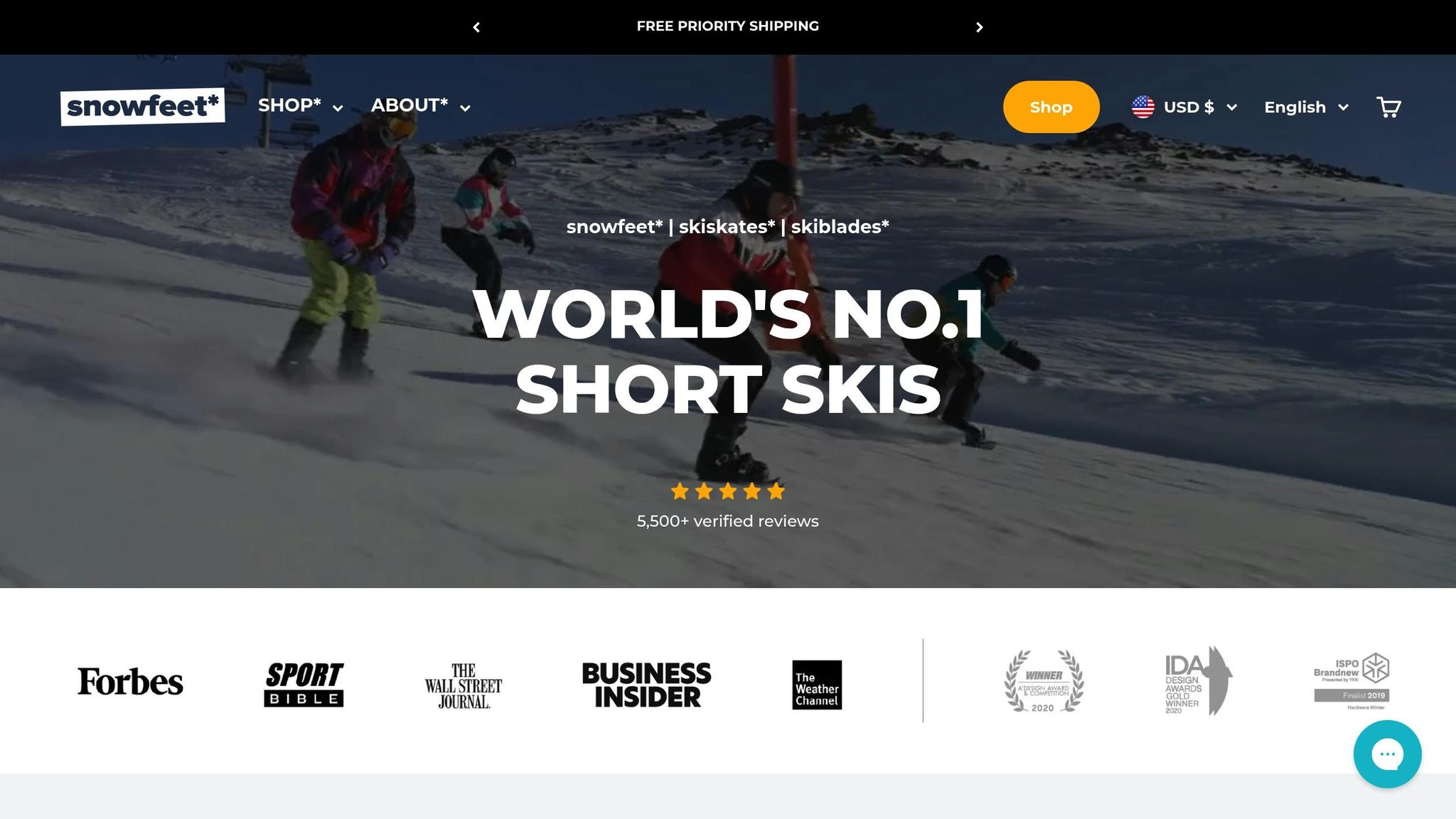
Snowfeet's Skiblades jsou k dispozici ve třech velikostech: 26 palců (65 cm), 39 palců (99 cm) a 47 palců (120 cm). Tyto velikosti vyhovují různým úrovním dovedností a nabízejí jedinečnou kombinaci vlastností snowboardu a lyží. Pojďme se podívat, jak každá velikost pomáhá snowboardistům přejít na lyžování.
Křivka učení
Silné 65 cm Skiblades jsou ideální pro snowboardisty, kteří začínají lyžovat. Jejich kratší délka je odpouštějící a snižuje dopad začátečnických chyb. Tato velikost je ideální pro nácvik základních zatáček a zastavení bez obtíží s delšími lyžemi.
Model 99 cm nabízí o něco větší stabilitu, zejména při vyšších rychlostech, přitom zůstává hravý a citlivý. Je skvělý pro snowboardisty, kteří chtějí zažít známý pocit plavání v prašanu a zároveň si užívat rychlé přechody z hrany na hranu.
Pro ty, kteří jsou připraveni zvládnout pokročilejší techniky, jsou 120 cm Short Skis solidní volbou. S délkou těsně pod 4 stopami jsou stále kratší než tradiční lyže, ale poskytují dostatečnou plochu pro sebevědomý carving a objevování celé hory.
Obratnost
Každá velikost Skiblades je navržena pro obratnost. Verze 65 cm je neuvěřitelně hbitá, ideální pro úzké prostory nebo přeplněné svahy.
99 cm Skiblades představují rovnováhu mezi rychlými zatáčkami a delšími carvingy, což snowboardistům umožňuje objevovat vše od terénních parků po upravené tratě. Jejich kratší délka oproti tradičním lyžím je činí citlivými, takže spontánní změny směru působí přirozeně.
Přenosnost
Jednou z nejlepších vlastností Skiblades je jejich kompaktní velikost. Model 65 cm se vejde do většiny velkých batohů, což je skvělá volba pro výpravy do volné přírody nebo snadné skladování v malých prostorech. Obě verze 99 cm a 120 cm jsou dostatečně kompaktní, aby se vešly do většiny kufrů aut, čímž odpadá potřeba střešních nosičů nebo dalšího úložného prostoru.
Tato přenosnost dokonale ladí s dobrodružným, na cestách orientovaným životním stylem mnoha snowboardistů, což usnadňuje spontánní výlety na hory.
Kompatibilita bot
Snowfeet Skiblades jsou kompatibilní se standardními snowboardovými botami, což je průlom pro snowboardisty, kteří zkouší lyžování. Není třeba investovat do nových bot – vázání je navrženo tak, aby vyhovovalo měkčímu flexu a jedinečné podrážce snowboardových bot, což zajišťuje plynulý přechod.
Cena
Ceny Snowfeet Skiblades začínají na 450 USD za model 65 cm, 490 USD za verzi 99 cm a 690 USD za 120 cm Short Skis. Ve srovnání s tradičními začátečnickými lyžařskými sety, které se pohybují od 800 do 1 200 USD, jsou tyto ceny mnohem přívětivější pro rozpočet.
Pro snowboardisty, kteří chtějí rozšířit své dovednosti bez velké investice nebo kompletní výměny vybavení, jsou Snowfeet Skiblades chytrou a cenově dostupnou volbou.
2. Snowfeet* Skiskates (44 cm)
Snowfeet* Skiskates jsou kompaktní a zábavnou obměnou lyžování, měří pouhých 17 palců (44 cm). Kombinují vzrušení ze zimních sportů s obratností bruslení a nabízejí jedinečný způsob, jak klouzat po svazích. Představte si je jako dokonalou kombinaci lyžování a boardových sportů.
Křivka učení
Pokud máte zkušenosti s inline bruslením nebo ledním hokejem, budete se se Skiskates cítit jako doma. Pro snowboardisty může být kratší délka trochu nezvyklá, ale rychlé přechody z hrany na hranu a zvládnutelná učební křivka zajišťují hladké přizpůsobení.
Obratnost
Tyto malé lyže jsou o obratnosti. Umožňují ostré zatáčky a rychlé změny směru, což vám dává pocit podobný inline bruslení na sněhu. Perfektní pro proplétání mezi stromy nebo navigaci v úzkých prostorách na sjezdovce.
Přenosnost
Jedna z nejlepších věcí? Skiskates jsou tak malé, že se vejdou přímo do vašeho batohu. To z nich dělá fantastickou volbu pro každého, kdo si cení lehkého vybavení a miluje svobodu vyrazit na sjezdovku kdykoliv podle nálady.
Kompatibilita bot
Není potřeba kupovat speciální boty. Skiskates jsou navrženy tak, aby fungovaly s vašimi snowboardovými botami, takže můžete zůstat u toho, na co jste zvyklí. To znamená méně vybavení k nákupu a plynulejší přechod k vyzkoušení něčeho nového.
Cena
Začínají na 390 $, Skiskates se pohodlně řadí mezi cenově dostupné Mini Ski Skates za 150 $ a vyšší řadu Skiblades, které začínají kolem 450 $. Ve srovnání s tradičními začátečnickými lyžařskými sety, které mohou stát mezi 800 a 1 200 $, jsou mnohem dostupnější způsob, jak si užít sníh. Navíc přinášejí svěží a vzrušující zážitek, který je v této cenové kategorii těžko překonat.
sbb-itb-17ade95
3. Standardní začátečnické lyže (např. Rossignol, Blizzard, Elan)
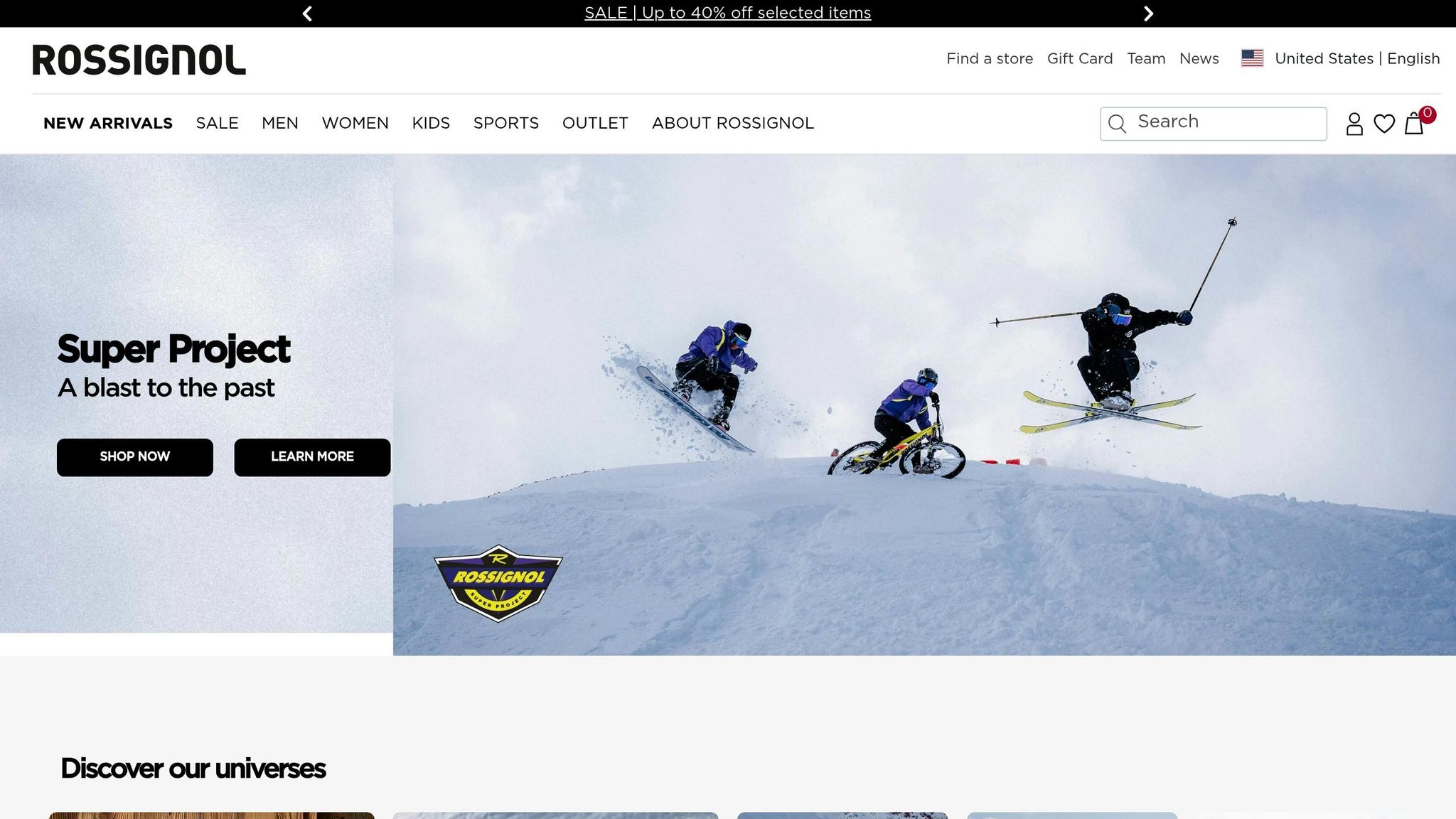
Začátečnické lyže od známých značek jako Rossignol, Blizzard a Elan jsou skvělé pro stabilitu. Ale pro snowboardisty, kteří přecházejí, mohou představovat jedinečné výzvy.
Křivka učení
Tradiční lyže jsou navrženy delší, upřednostňují stabilitu před obratností. Pro snowboardisty zvyklé na rychle reagující vybavení může být přechod trochu náročný. Delší lyže vyžadují více koordinace a přesné přenášení váhy, což může být strmý kopec k překonání, když začínáte.
Obratnost
Tyto lyže vynikají na upravených sjezdovkách a nabízejí hladkou a stabilní jízdu. Tato stabilita však stojí za cenu rychlých zatáček a odezvy. Pro snowboardisty zvyklé na ostré, obratné pohyby to může být omezující a trochu frustrující. Navíc jejich velikost a design je mohou ztížit ovládání mimo sjezdovky.
Přenosnost
Pokud jde o přenosnost, tradiční lyže nejsou zrovna cestovatelsky přívětivé. Jsou objemné, vyžadují střešní nosič nebo velkou lyžařskou tašku a mohou spontánní výlety proměnit v logistickou noční můru. Ve srovnání s kompaktními možnostmi jako Snowfeet*, které se snadno balí a nosí, působí tradiční lyže jako nadměrná zavazadla lyžařského světa.
Porovnání výhod a nevýhod
Pokud jste snowboardista a uvažujete o vyzkoušení lyžování, je užitečné porovnat možnosti vedle sebe. Každá volba má své výhody a výzvy, tak si to pojďme rozebrat.
| Vlastnost | Snowfeet* Skiblades (65-120 cm) | Snowfeet* Skiskates (44 cm) | Tradiční začátečnické lyže |
|---|---|---|---|
| Křivka učení | Snadné – funguje se snowboardovými nebo lyžařskými botami | Nejjednodušší – kompatibilní s běžnými zimními botami | Strmé – vyžaduje naučit se novou techniku |
| Obratnost | Výborné – rychlé a citlivé | Vynikající – super obratné a hravé | Omezené – upřednostňuje stabilitu před obratností |
| Přenosnost | Kompaktní – snadno se vejdou do auta | Ultra přenosné – vejdou se do batohu | Objemné – 150-200+ cm; vyžaduje střešní nosič nebo velký lyžařský vak |
| Kompatibilita bot | Funguje se snowboardovými nebo lyžařskými botami | Běžné zimní boty nebo snowboardové boty | Pouze lyžařské boty |
| Cenové rozpětí | 450–690 $ | Začíná na 390 $ | 300–800 $+ (plus půjčení nebo nákup bot) |
Rozebrání na části
Produkty Snowfeet* vynikají svou přenosností a snadným použitím. Tradiční lyže, které jsou obvykle dlouhé 150 cm až přes 200 cm, mohou být obtížné na přepravu. Potřebujete střešní nosič nebo velký lyžařský vak, zatímco Snowfeet* Skiblades a Skiskates mají délku od pouhých 44 do 120 cm. Jsou dostatečně kompaktní, abyste je mohli hodit do auta - nebo dokonce do batohu v případě Skiskates.
Co se týče váhy a únavy, tradiční lyže mohou po dlouhém dni na svahu působit těžce a vyčerpávajícím dojmem. Produkty Snowfeet* jsou naopak mnohem lehčí, což usnadňuje jejich ovládání a méně unavuje.
Kompatibilita bot je další oblast, kde Snowfeet* vyniká. Můžete použít své stávající snowboardové boty nebo dokonce běžné zimní boty s jejich produkty. Tradiční lyže však vyžadují specializované lyžařské boty, což znamená další náklady a starosti s jejich koupí nebo půjčením.
Co se týče nákladů, i když produkty Snowfeet* mohou na první pohled vypadat draze, ve skutečnosti vám dlouhodobě ušetří peníze. U tradičního lyžování máte navíc výdaje za lyžařské boty a logistiku přepravy objemnějšího vybavení.
Nakonec je důležitý faktor učební křivky. Tradiční lyže vyžadují přesné přenášení váhy a techniky, které mohou snowboardistům připadat cizí. Produkty Snowfeet*, zejména Skiskates, jsou navrženy tak, aby působily přirozeněji a využívaly pohyby, které snowboardisté už znají. To dělá přechod plynulejší a zábavnější.
Stručně řečeno, produkty Snowfeet* nabízejí přístupnější a méně komplikovaný způsob, jak si vyzkoušet lyžování bez strmého učebního křivky a dodatečných nákladů na tradiční lyže.
Závěrečná doporučení
Po podrobném rozboru zde je rychlý přehled nejlepších možností Snowfeet* pro snowboardisty, kteří chtějí vyzkoušet lyžování.
Produkty Snowfeet* jsou fantastickou volbou pro snowboardisty, kteří chtějí udělat krok dál. Proč? Jsou kompaktní, snadno použitelné a navržené tak, aby bez problémů fungovaly s vašimi stávajícími zimními botami nebo snowboardovými botami. Není třeba investovat do objemných tradičních lyží!
- Snowfeet* Skiskates (44 cm): Za cenu 390 $ jsou perfektní pro začátečníky. Snadno se naučíte a fungují s vybavením, které už máte.
- Snowfeet* Skiblades (65 cm): Za 450 $ nabízejí skvělou kombinaci stability a ovladatelnosti. Ideální pro upravené sjezdovky nebo terénní parky, skvěle ladí s snowboardovými botami.
- 99 cm Skiblades: Za 490 $ jde hlavně o kontrolu a jistotu, zejména na prašanu nebo strmějších svazích.
Tyto možnosti dávají snowboardistům hladký, škálovatelný způsob, jak přejít na lyžování, aniž by museli utrácet majlant nebo tahat těžké vybavení.
Se Snowfeet* můžete carvingovat, skákat a objevovat, a přitom mít vše lehké a jednoduché. Je to lyžování - ale na vašich podmínkách. Takže vynechte tradiční dlouhé lyže a přijměte praktičtější a vzrušující způsob, jak vyrazit na svah!
Často kladené otázky
Jsou Snowfeet Skiblades nebo Skiskates lepší pro snowboardisty, kteří se učí lyžovat?
Snowfeet Skiblades jsou skvělou volbou pro snowboardisty, kteří chtějí vyzkoušet lyžování. Proč? Jsou lehké, kompaktní a super snadno ovladatelné. Díky kratší délce jsou neuvěřitelně manévrovatelné, což činí přechod ze snowboardingu na lyžování méně zastrašujícím. Snadněji se přizpůsobíte a rychle získáte sebevědomí.
Na druhou stranu Skiskates nabízejí jiný zážitek. Jsou zábavné a přenosné, ale jejich užší základna a design podobný bruslím vyžadují trochu více rovnováhy a přesnosti. To může být pro začátečníky trochu náročné, ale jakmile si je osvojíte, jsou pořád skvělou zábavou.
Závěr? Produkty Snowfeet jsou o tom, aby lyžování bylo zábavné a přístupné pro snowboardisty. Mnoho uživatelů oceňuje jejich všestrannost a hravou atmosféru, která pomáhá přechod ze snowboardingu na lyžování udělat méně skokem a více dobrodružstvím.
Na jaké typy terénu nebo podmínek jsou produkty Snowfeet nejvhodnější ve srovnání s tradičními lyžemi?
Vybavení Snowfeet vyniká v různých podmínkách, ale opravdu se prosazuje na tvrdém, zledovatělém povrchu a nerovném terénu. Díky kompaktní velikosti a lehkému designu jsou velmi snadno ovladatelné, což umožňuje rychlé zatáčky a udržení kontroly – i na těsnějších nebo náročnějších místech.
Na rozdíl od tradičních lyží, které mohou někdy působit objemně nebo pomalu, kratší délka Snowfeet přináší hravý nádech. To je skvělá volba pro snowboardisty, kteří chtějí okořenit zážitek lyžováním, které je zábavné a přizpůsobivé. Ať už sjíždíte upravené tratě nebo čelíte nepředvídatelnému sněhu, Snowfeet kombinuje pohodlí a výkon způsobem, který je těžké překonat.
Co dělá Snowfeet Skiblades a Skiskates lepší volbou než tradiční lyžařské vybavení pro snowboardisty, kteří zkouší lyžování?
Snowfeet Skiblades a Skiskates jsou skvělou volbou pro snowboardisty, kteří chtějí vyzkoušet lyžování. Proč? Jsou lehká, kompaktní a super snadno ovladatelná. Na rozdíl od tradičních lyží, které mohou působit těžkopádně a vyžadovat více technických dovedností, se vybavení Snowfeet zaměřuje na manévrovatelnost a čistou zábavu – ideální pro začátečníky nebo kohokoli, kdo hledá pohodový den na svahu.
S délkami od 65 cm do 120 cm jsou tyto skiblades mnohem snáze ovladatelné, což je ideální pro hravé, rekreační lyžování. Navíc jsou neuvěřitelně přenosné. Už žádné tahání těžkého vybavení – prostě je hoďte do tašky a vyrazte. Pro snowboardisty zvědavé na lyžování, ale ještě nechtějící investovat do kompletní výbavy, Snowfeet nabízí jednoduchý a bezproblémový způsob, jak to vyzkoušet.

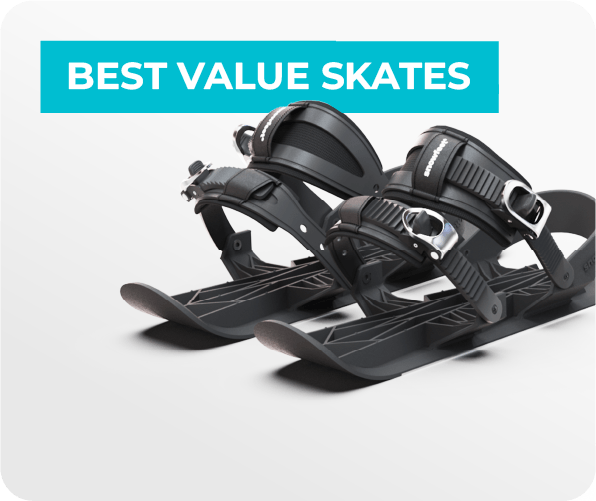



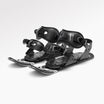
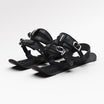
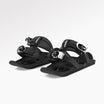
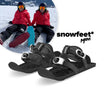

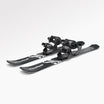

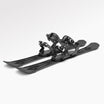
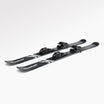






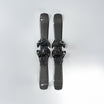
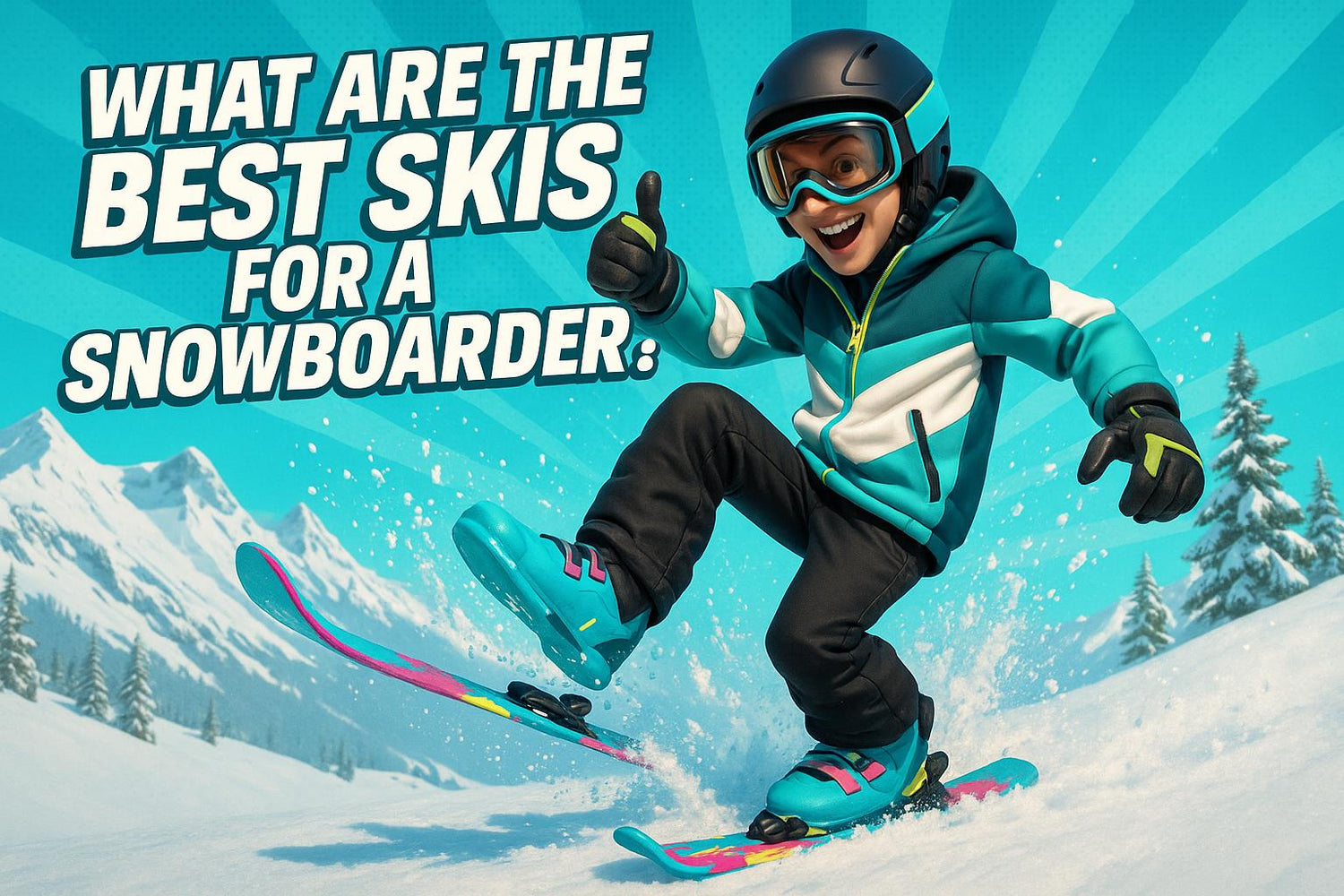
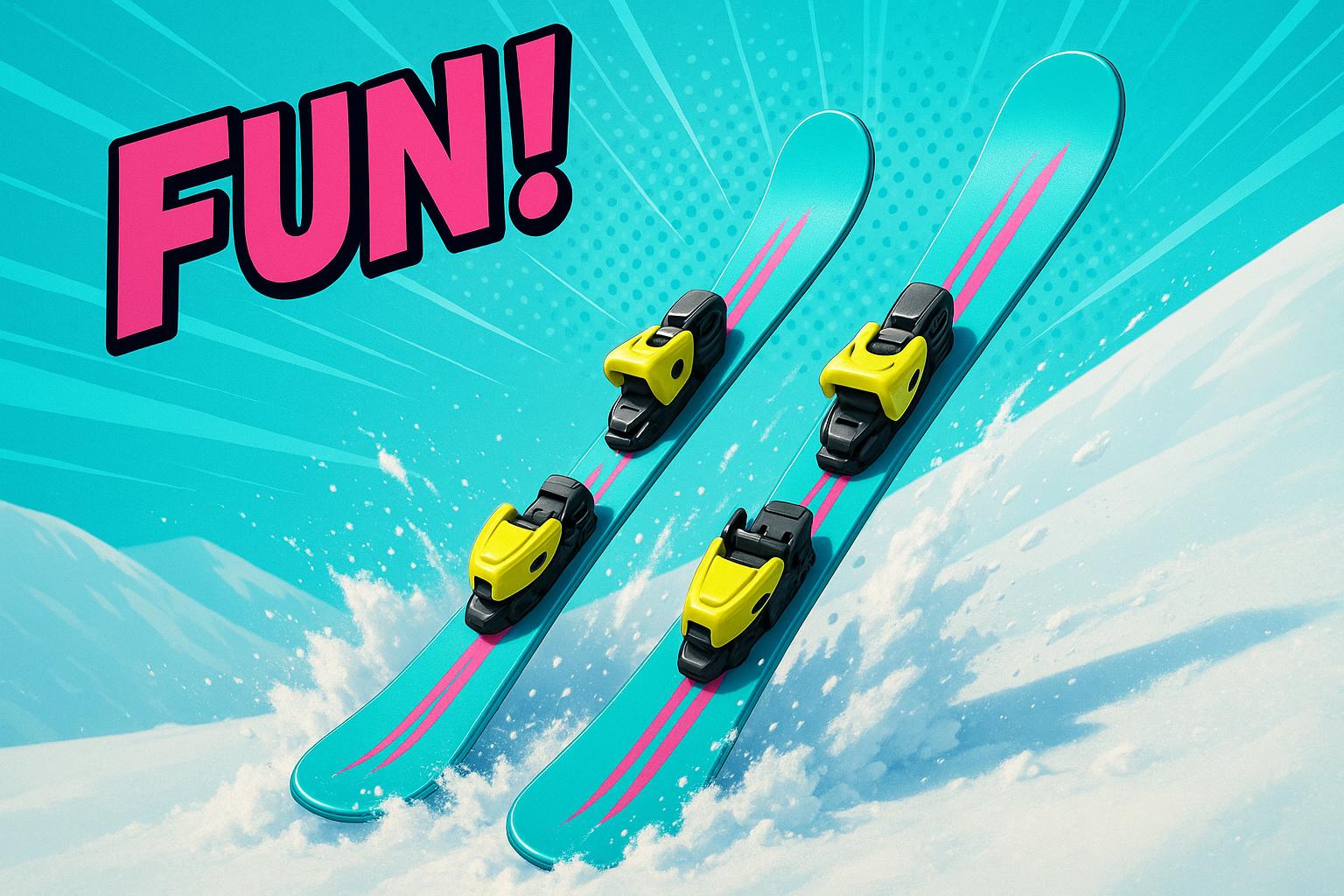

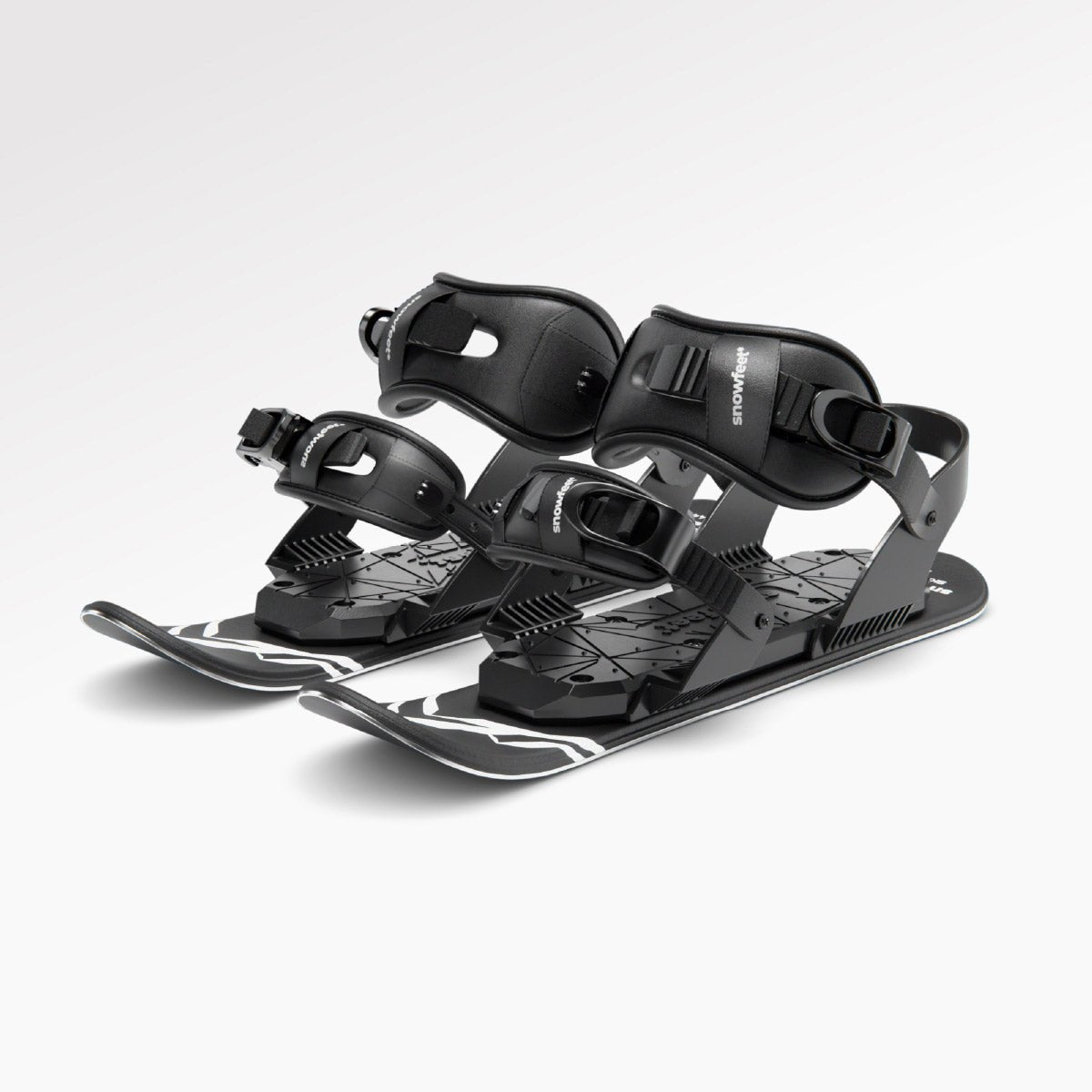
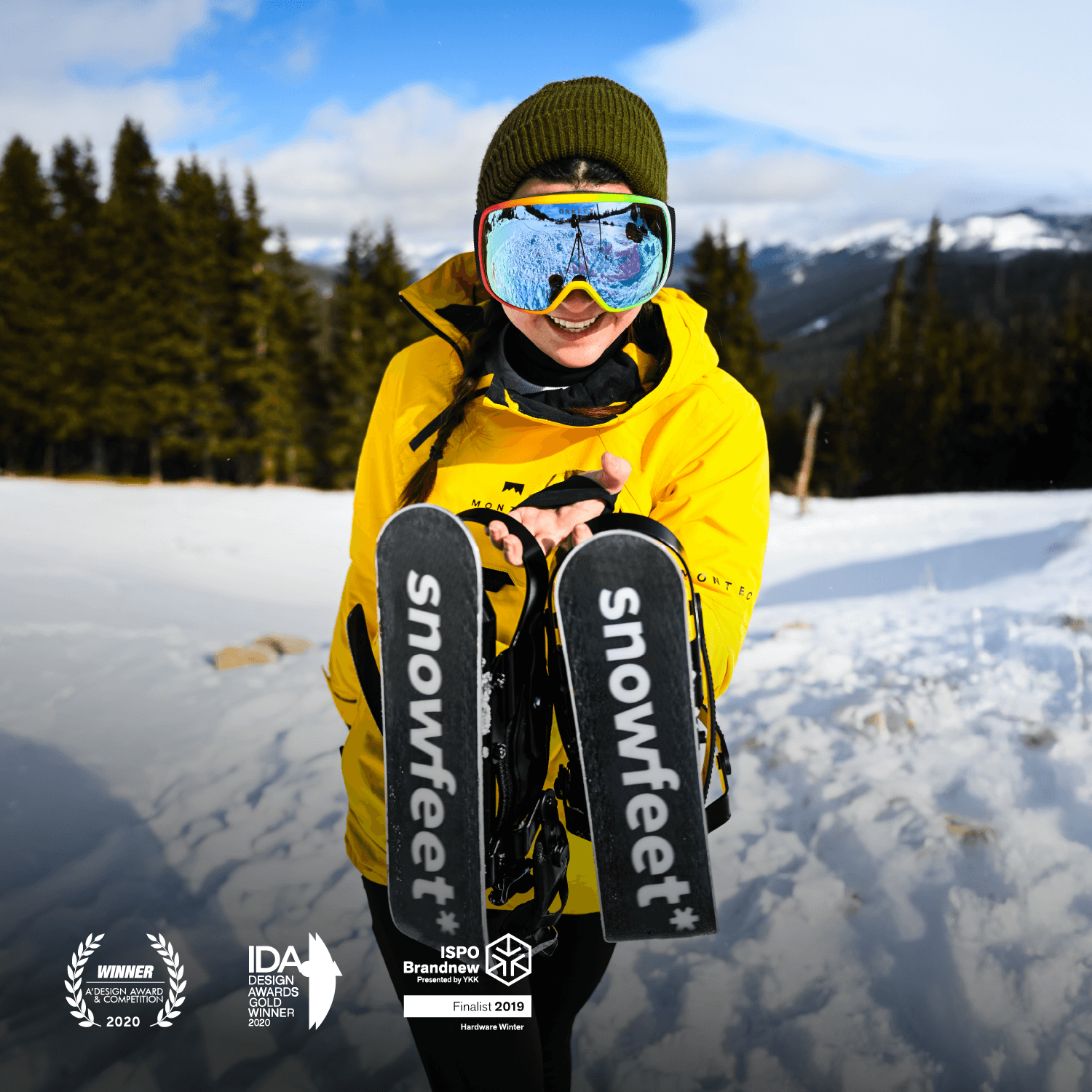
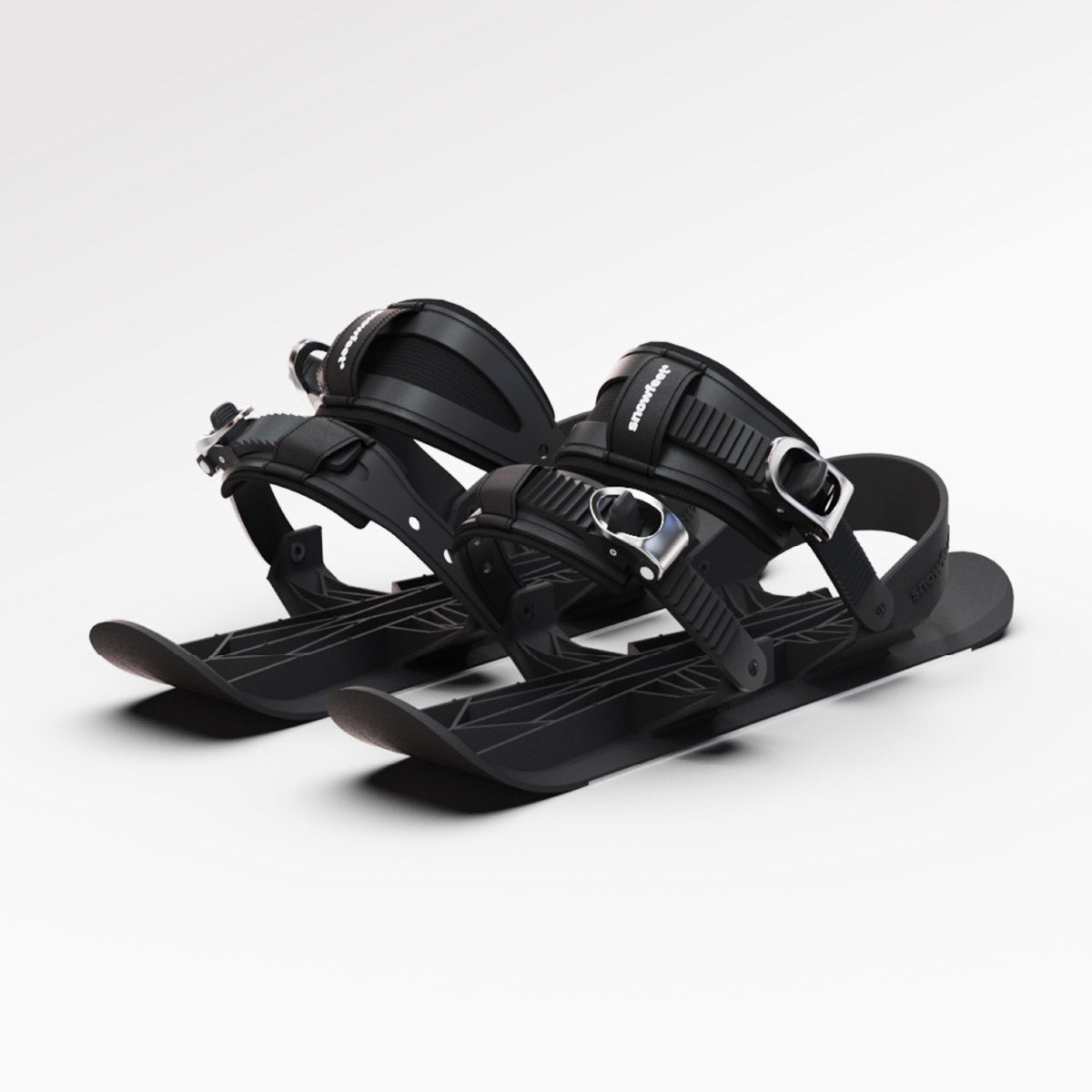

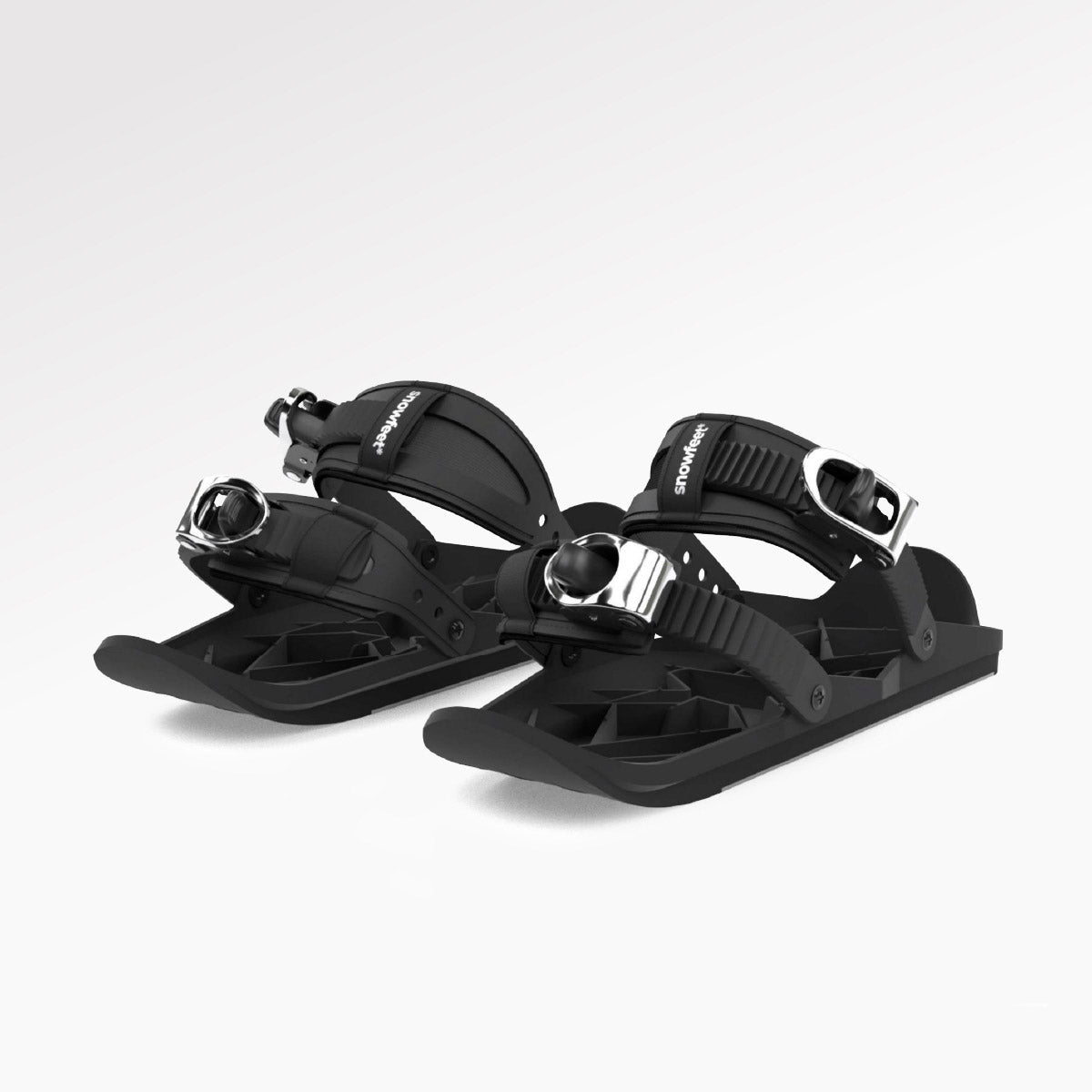
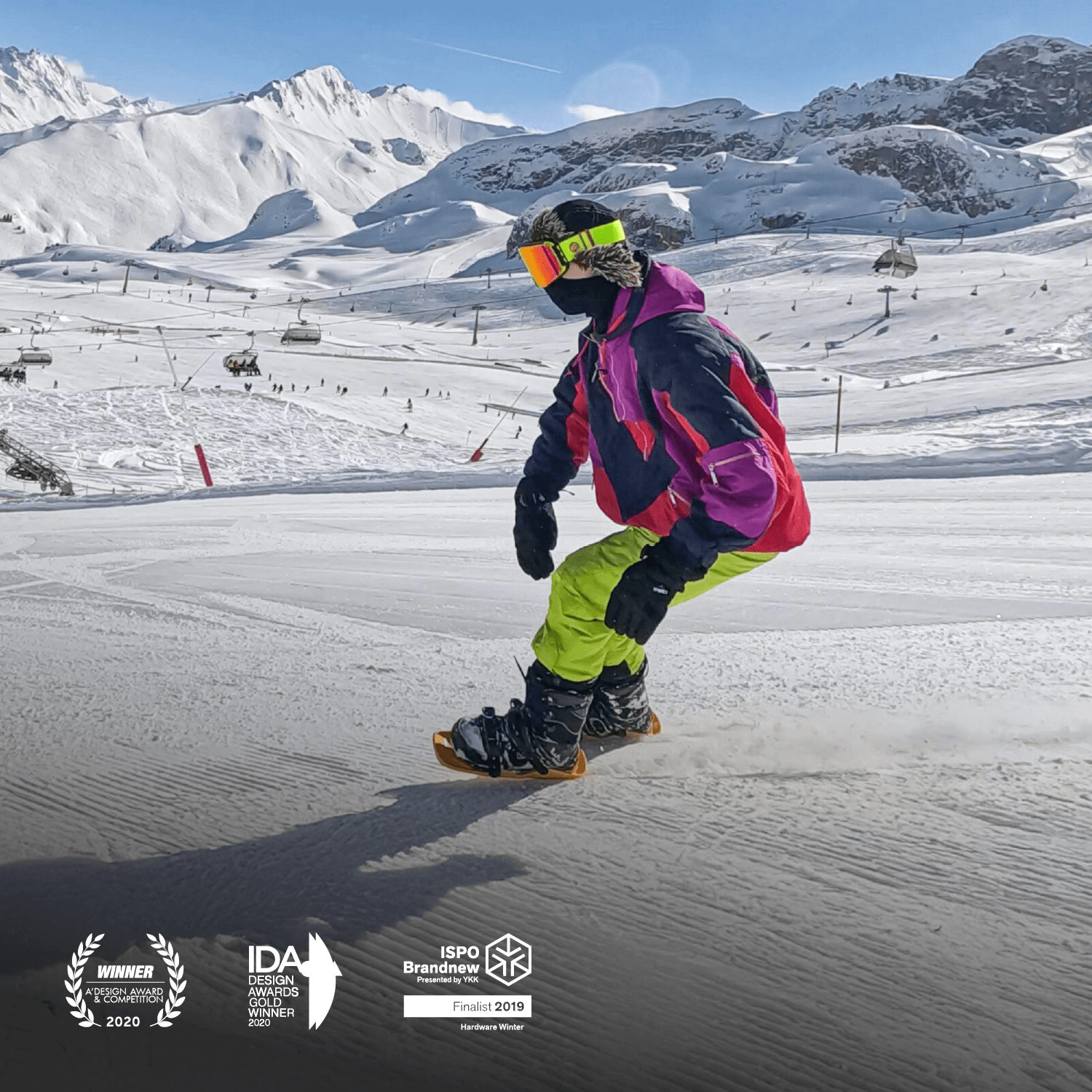


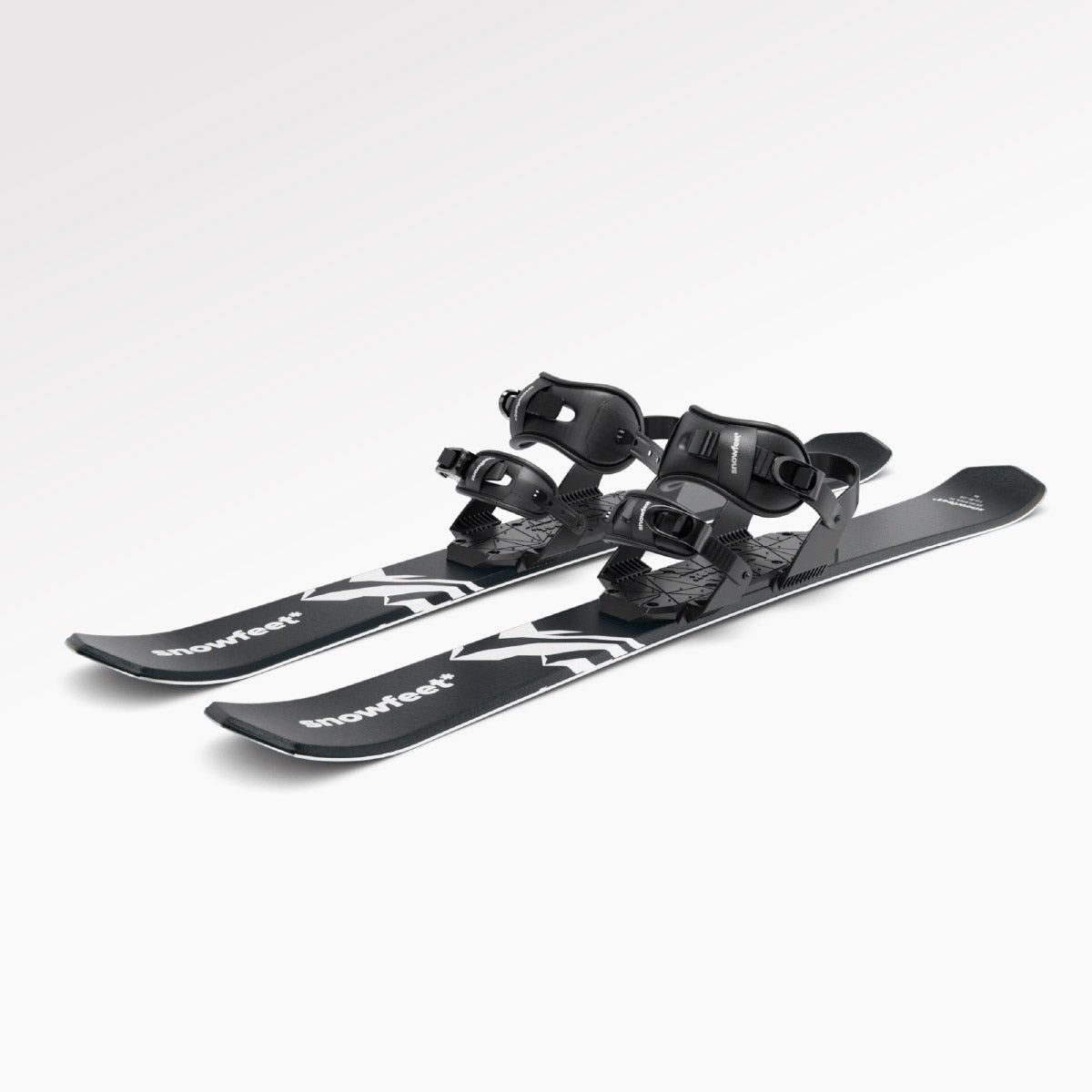
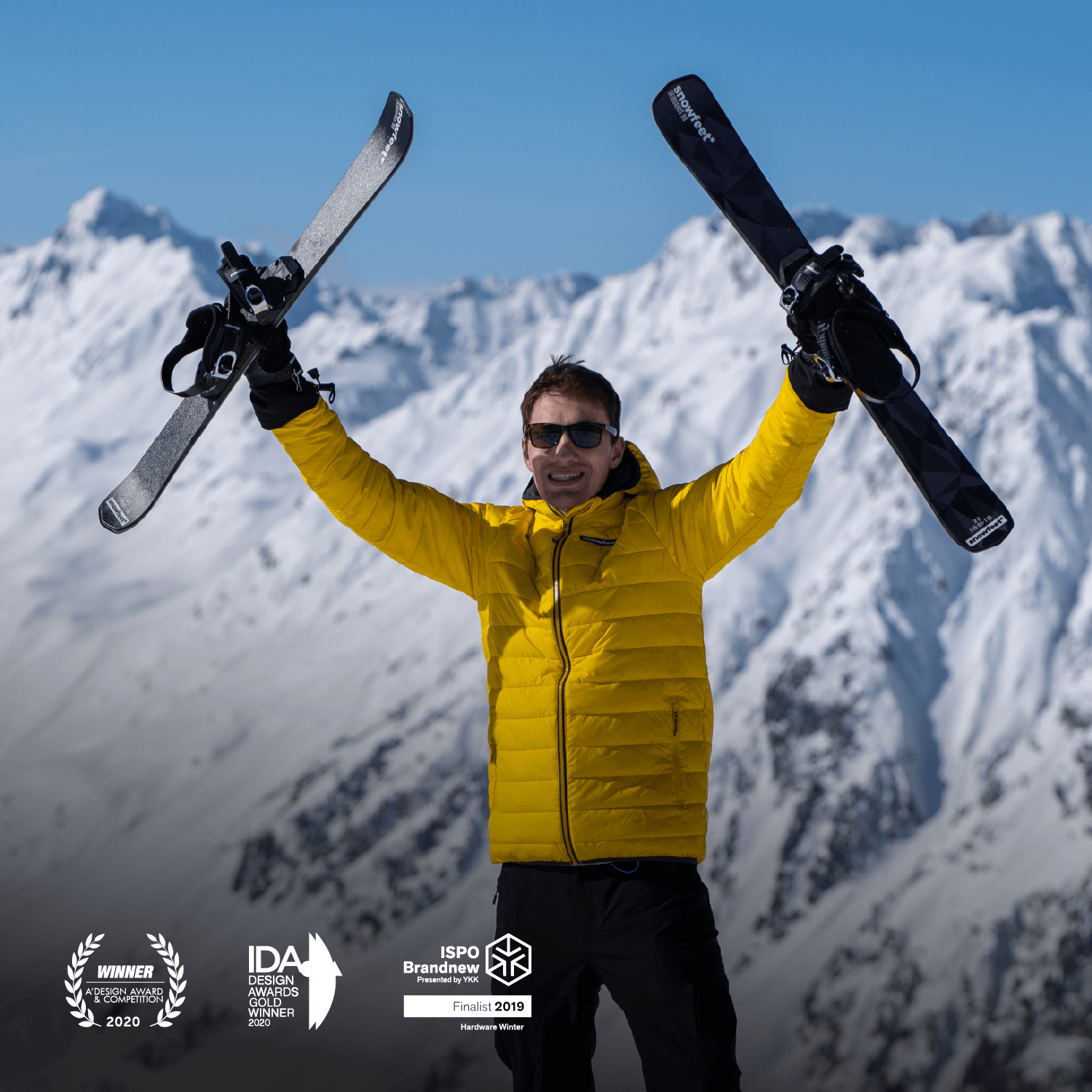
Zanechte komentář
Tento web je chráněn službou hCaptcha a vztahují se na něj Zásady ochrany osobních údajů a Podmínky služby společnosti hCaptcha.